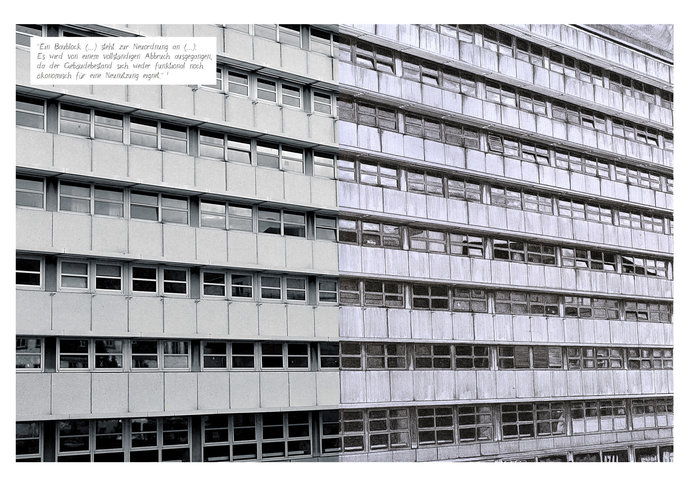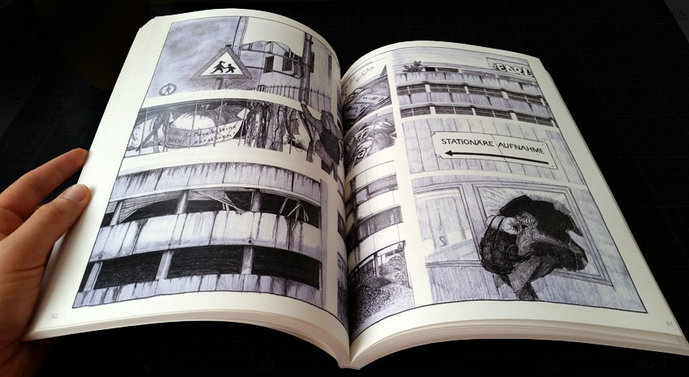

© Clara Bosch


© Clara Bosch


© Clara Bosch


© Clara Bosch


© Clara Bosch


© Clara Bosch


© Clara Bosch


© Clara Bosch
The comic book work, Peer Gynt, the I and the Other is a free “staging” of a poem, “Peer Gynt”, published in 1867 by Henrik Ibsen.The development of the protagonist Peer Gynt and the search for the true core of his being is set to the the slow demolishment of an actual building in Stuttgart.
Peer Gynt, the I and the Other is not just a story about finding oneself; it is also a story about story-telling. Ibsen’s “Peer Gynt” tells the life story of the protagonist with the same name. In the adventure-filled, fantastical, satirical and thought-provoking episodes, only one question comes to light, though from different angles; “Who am I and what am I doing in this world?” The piece does not deliver any helpful answers. On the contrary, it breaks all budding attempts at an answer by taking apart any easy definition of good and bad, agreeable and non-agreeable, true and false. This dismantling of Peer Gynt’s certainties, of his ideas, lies and dreams, but also of his real physical body, is visualized in the comic book through the demolition process of the former children’s hospital in Stuttgart, which has slowly disappeared over the course of a year. The building acts as a place for the unfolding of the plot, as Peer Gynt’s lived space in the real and transferred sense. At the same time, it acts as a metaphor for Peer’s “Ideas and lies structure” that sustains him for a long time; as a metaphor also for his whole being which during the course of time plagues him and in the last act, skins him like an onion. The formal structure of the piece is based on the famous scene where Peer Gynt compares himself to an onion that wears many skins but has no core. Peer’s story is told on many levels of reality, represented with various drawn or photographic media. Anecdotes from Peer’s life are told as such, in the style of “Superman” or “V for Vendetta”.
This mirrors the way Peer openly deals with truth, and also with the fact that image and text often do not match in comics; or do so only at second glance. This provokes a different way of reading, where not everything can be taken literally and the abstract meaning must be scrutinized.
Comic, 140 pages, paperback
Tutors:
Prof. Heike Schuppelius, Prof. Anja Dorn, Prof. Stephan Krass, Prof. Hansjerg Maier-Aichen